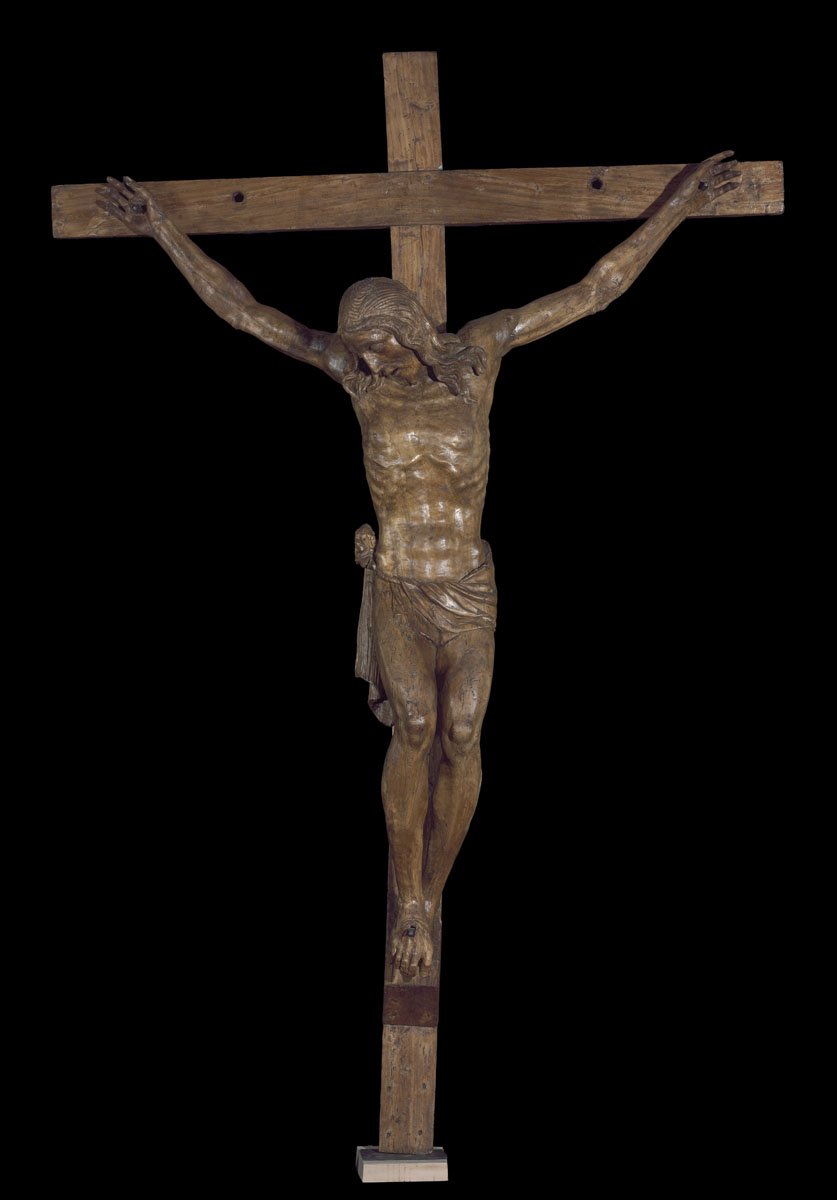
Crucifix
Sculptures
| Artist | |
|---|---|
| Culture | Austrian |
| Date | 1771–1783 |
| Object type | sculpture |
| Medium, technique | tin-lead alloy |
| Dimensions | 45 × 22 × 25 cm |
| Inventory number | 51.936 |
| Collection | Sculptures |
| On view | Museum of Fine Arts, Second Floor, European Sculpture 1350-1800, Gallery 3 |
The upward path of Messerschmidt’s career was brought to a halt by a mysterious illness. He was tipped to be professor of sculpture in the Academy of Arts in Vienna, and was a favourite sculptor in the imperial court, when he was suddenly pensioned off on account of his mental illness. Upset, he took leave of Vienna for good and settled in Pozsony. It was here that most of his Character heads were made, a unique series of about fifty busts.
Much head-scratching has gone on over the interpretation of the busts, which after the sculptor’s death were displayed as a raree-show in the Prater in Vienna. Initially they were associated with the artist’s presumed schizophrenia, and in a Freudian vein they were seen as a reflection of the subconscious. Others suggested that the heads were inspired by the peculiar methods of the doctor Franz Anton Mesmer, a close friend of the artist’s, which are held to be the forerunner of psychotherapy. Mesmer believed the root of psychological and even indirectly physical diseases was the disorder of the magnetic field of the nervous system. During the sessions Messerschmidt would have seen such extreme emotions on the patients’ faces. It is true, however, that in Messerschmidt’s time the representation of human emotions was a central issue of art. As a teacher at the academy he certainly knew contemporary studies of expressions, thus in spite of their traditional titles the heads explore various, sometimes extreme grimaces rather than human characters.
Miriam Szőcs
Balogh, Jolán, Katalog der ausländischen Bildwerke des Museums der bildenden Künste in Budapest, IV – XVIII. Jahrhundert: 1. Textband Bd. 1, Akadémiai Kiadó, Budapest, 1975, p. 256., no. 391.
Szmodisné Eszláry, Éva, A Régi Szoborgyűjtemény kincsei, Szépművészeti Múzeum, Budapest, 1994, p. 72.
Szmodisné Eszláry, Éva, The treasures of the Old Sculpture collection, Szépművészeti Múzeum, Budapest, 1994, p. 72.
Museum of Fine Arts: highlights from the collection, Szépművészeti Múzeum, Budapest, 2019, p. 332-333.
Szépművészeti Múzeum: Remekművek az ókortól a 18. század végéig, Szépművészeti Múzeum, Budapest, 2019, p. 332-333.
Museum of Fine Arts: Highlights from the Collection, Museum of Fine Arts, Budapest, 2019, p. 332-333.
Masterpieces: Museum of Fine Arts Budapest, Museum of Fine Arts, Budapest, 2019, p. 138.
Remekművek: Szépművészeti Múzeum, Szépművészeti Múzeum, Budapest, 2019, p. 138.
Múzeumi kalauz: Vezető a Szépművészeti Múzeum régi gyűjteményeihez, Szépművészeti Múzeum, Budapest, 2021, p. 266-267.
Museum Guide: Old collections of the Museum of Fine Arts, Budapest, Museum of Fine Arts, Budapest, 2021, p. 266-267.
This record is subject to revision due to ongoing research.